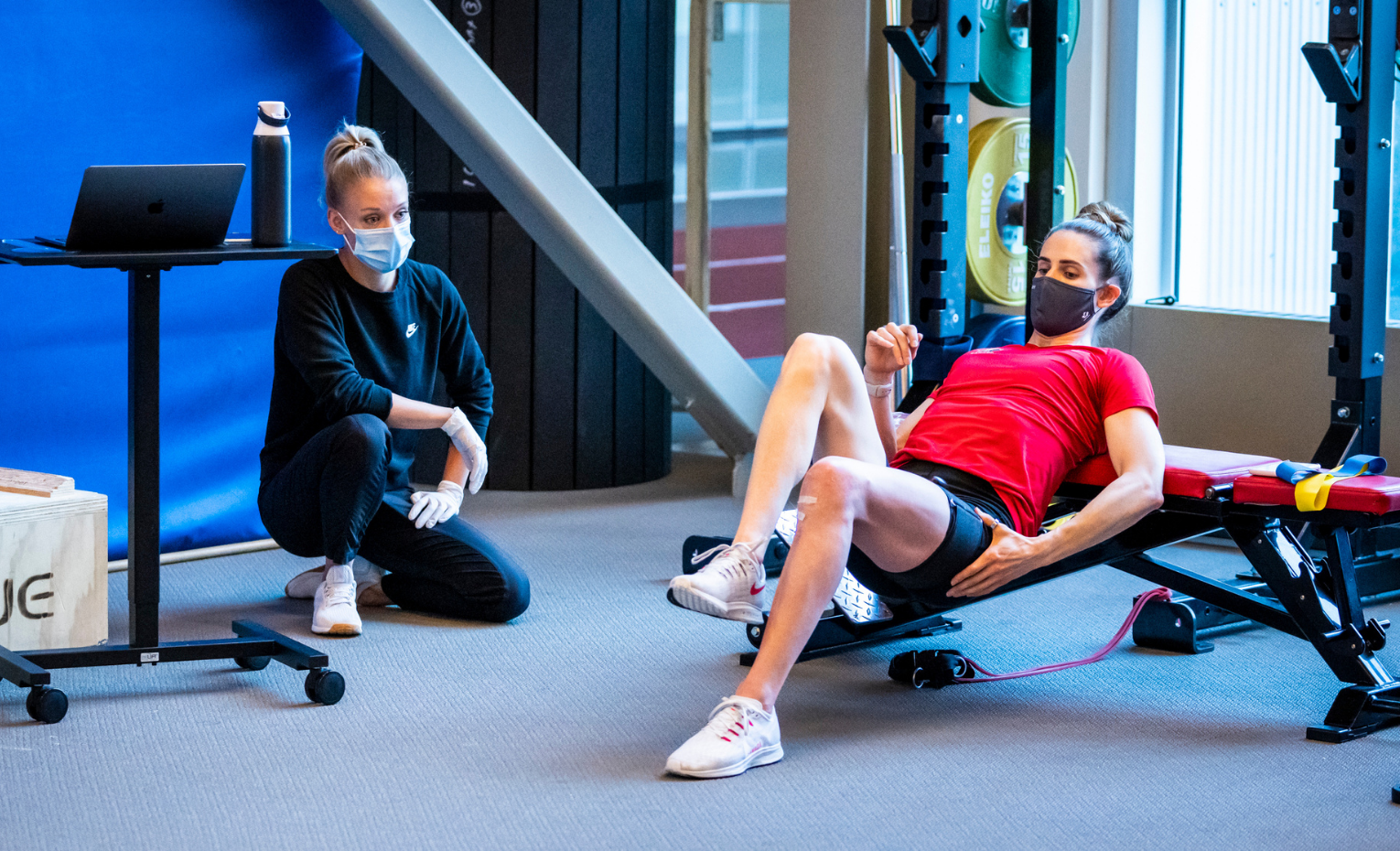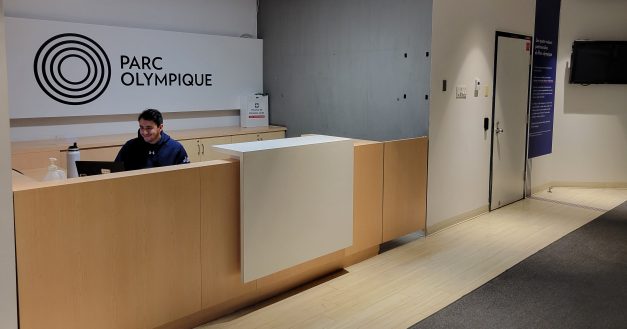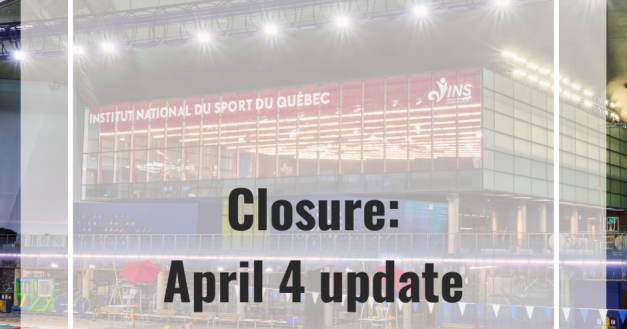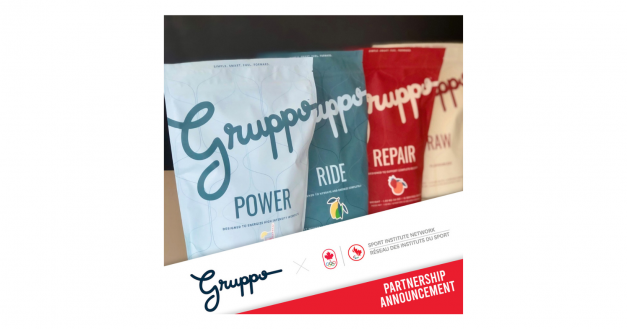Photo Credit: CSI Calgary
#WECAN HELP YOU HEAL
The Agony of Injury
Athletes get hurt, a lot — especially in high-risk sports — and the long road back to the field of play can be uncertain, challenging, and soul-crushingly hard. Knees, brains, shoulders, hips, and yes, hearts, are broken, damaged, strained, pulled, and torn apart. Physics always wins.
But athletes heal, too. They mend those knees, brains, shoulders, hips, and hearts with awe-inspiring resolve. While they cannot get back a lost race, the tiny moment a knee is shredded, or the anguish that is lived in the aftermath of an injury, they can, and always do, look ahead to the challenge of healing.
So what, and who, is there to help them begin again, heal, and return to the sport they love?
Return to Health
Recovery and rehabilitation wouldn’t be possible without a coordinated and sustained effort by the athlete and a team of medical experts from the Canadian Olympic and Paralympic Sport Institute (COPSI) Network. In most cases, the Integrated Support Team (IST) is called upon to fill this most critical role: sport medicine physicians, orthopedic surgeons, physiotherapists, athletic therapists, strength and conditioning coaches, and massage therapists.
The process they follow has a name: ‘Return to Health’, or ‘Return to Performance’, and it’s a relatively new perspective on athlete well-being that has emerged across Canada in a concerted effort to identify standards and strategies to address athlete injuries. It’s about healing the body, but also encompasses mental health and social factors, too — a bio-psycho-social approach.
A national symposium held in Calgary in 2019 brought together experts and practitioners from across the COPSI Network to begin formalizing a national strategy for return to health.
“It’s part of the evolution of sport, where a more holistic approach to athlete health is emerging,” explains Matt Jordan, Director, Sport Science at Canadian Sport Institute Calgary (CSI Calgary). “You can’t be successful on the international stage if you don’t have strategy around health.”
Jordan says the idea behind return to health is to provide athletes with a centralized hub for their rehabilitation, as well as the resources to stay there as long as is needed.
It is a work in progress and the COPSI Network has been putting pieces into place by relying on its own resources to support injured athletes across the country. There are several locations in the Network with formalized programs.
Knees and Brains
Last year, in the sport of ski cross, the national team sustained seven season-ending injuries. Most were knee injuries, and many involved surgery. Amazingly, of the seven athletes, five are back on snow and four recently made the Olympic Team for Beijing. Craig Hill, IST Lead – Ski Cross at Alpine Canada and Strength and Conditioning Coach at Canadian Sport Institute Pacific (CSI Pacific), in collaboration with Isabel Aldrich-Witt, Return to Performance Lead at CSI Calgary, were instrumental in their recoveries.
Once an athlete is injured, Hill and Aldrich-Witt pool their expertise with other IST members to provide the best care for the athletes. Once the initial emergency phase of injury management is completed, decisions regarding the course of treatment, like surgery, are made, and a recovery plan is set up. Then an athlete joins a program inside the COPSI Network and they’ll remain centralized there until rehab is complete. It can take anywhere from nine months to two years to recover from knee surgery.
“The goal is to get them back better than they were before the injury,” says Aldrich-Witt. She says all the athletes she’s worked with since the program began in 2019 have made it back.
As a specialist in knee injury rehabilitation, Aldrich-Witt brings a unique skillset to her practice, relying on an evidence-based exercise approach, as opposed to manual therapy. The focus at first is on swelling reduction and range of motion. Then comes strength development, where the athlete must achieve their pre-injury strength and power, determined annually with baseline testing. Dynamic work and return to snow are next.
With over 35 practitioners on the Ski Cross IST, Hill says that communication can be challenging at times. But they meet frequently to share critical details. “The team trusts each other,” he says. “While we don’t always have the same philosophy or agree, I know I can speak up and we can have a professional conversation.” The process is productive because they keep what’s best for the athlete at the forefront.
Seeing the athletes return to competition after a gruelling injury and rehab process is extremely rewarding for IST members like Hill and Aldrich-Witt. “We don’t celebrate that enough,” says Hill. “Just getting back is a huge milestone for these athletes.”
In sports where crashes or collisions are frequent, it’s concussions that can be debilitating — and scary. The team at Institut national du sport du Québec (INS Québec) has established the Concussion Interdisciplinary Clinic to provide athletes with the best care possible. The clinic offers a multidisciplinary and integrated approach with a high level of specialization.
Thomas Romeas, Research and Innovation Lead at INS Québec, says that once a concussion is sustained, there is a systematic management and return to health plan put in place. “Our main goal is to protect the athlete and provide them with the best possible recovery, to accelerate return to performance and reduce the risk of a new concussion or injury.”
INS Québec Chief Medical Officer, Dr. Suzanne Leclerc, was instrumental in crafting the COPSI Network guidelines for concussion, a national collaborative effort. Romeas emphasizes that because concussions are multi-modal in nature, experts from different fields are needed to better understand treatment. “This will only be possible with all our national resources, shared knowledge and expertise,” he says. “And Canada has everything to lead the way in this area.”
Thomas Romeas
Lead, Research & Innovation
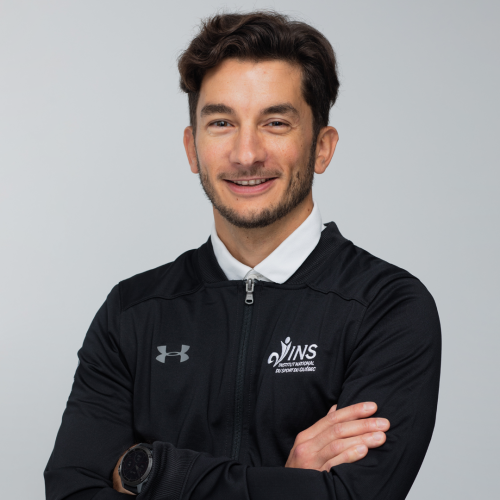
Dr Suzanne Leclerc
Director, Sport Medicine
The INS Québec Concussion Interdisciplinary Clinic offers a multidisciplinary and integrated approach with a high level of specialization. This clinic is headed by Dr. Leclerc.
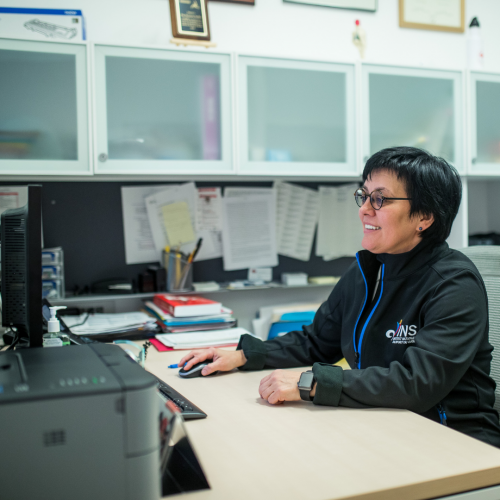
Hearts Healed
For Dave Ellis, High Performance Director – Ski Cross at Alpine Canada, the benefits of the Return to Performance program are that it is formalized, centralized and close to home for many ski cross athletes. Because it operates outside of the Ski Cross program Ellis says he relies heavily on COPSI Network practitioners to ensure that his injured athletes get the care they need, including mental health.
The Return to Performance program is a huge value add to our Ski Cross program,” he says. “Everything is in-house and there’s a more concentrated and collaborative program around an athlete.” The same level of care is provided between members of the COPSI Network and it enables athletes to stay close to home during recovery.
The entire sport community is increasingly aware that the approach to athlete well-being is evolving to address all aspects of human health, including broken hearts. For Jordan, Director of Sport Science at CSI Calgary, what the COPSI Network provides is scaleable, regional IST expertise in the return to performance. “At the end of the day, athletes need to know that if they’re hurt, they’re taken care of.”
